#pinguinus
Explore tagged Tumblr posts
Note
If we’re talking extinct birds, can I get an Auk?





Great Auk (Pinguinus impennis), family Alcidae, order Charadriiformes, was found along the East Coast of the US, the North Atlantic, and around the coasts of Western Europe
EXTINCT (1852)
Also called Penguin or Garefowl.
A sea bird that fed on fish crustaceans.
Not related to what we now call penguins, but in the same family as puffins, guillemots, razorbills, dovekies, and auklets.
The penguins of the Southern Hemisphere were named after their resemblance to this bird.
The Great Auk grew up to 85 cm (33 inches) tall and weighed up to about 5 kg (11 lbs).
The species went extinct due to overhunting, mainly for their down. The numbers of Great Auk had dropped greatly as well during the "Little Ice Age", due to lower sea levels exposing nesting sites to predators.
illustrations: John Gerrard Keulemans, John Gould, Keulemans , John James Audubon
photograph by Mike Pennington
307 notes
·
View notes
Text
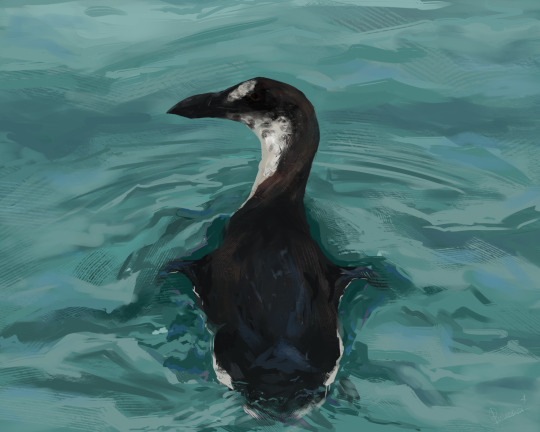
A Great auk, a young individual, swims about in the seas of the North Atlantic. Once a common sight, now reduced to nothing but memories
3K notes
·
View notes
Text

today's daily is: the great auk! (p. impennis)
( requested by anon :] )
68 notes
·
View notes
Text

O arau-gigante era caçado nas Ilhas Escocesas, Noruega, Islândia e alguns outros lugares — mas o principal matadouro dos arau-gigantes era em Newfoundland. 🐾
#animal#animais#animals#biologia#biology#birds#aves#passaros#extincao#extinct#extinction#extinct animals#animais extintos#arau gigante#pinguinus impennis
3 notes
·
View notes
Text

Riesenalk, Plautus impennis | Die Vögel (1913) | Alfred Edmund Brehm (1829-1884) | Biodiversity Heritage Library
6 notes
·
View notes
Text
Great Auk (Pinguinus impennis)

"He’s the weird mascot on the program my school knowledge bowl team uses to practice. Vote Great Auk for all the nerds" "Extinct and goofy lookin'"
I think these paragraphs from Wikipedia sum up the history of the Great Auk better than I could:
"The great auk was an important part of many Native American cultures, both as a food source and as a symbolic item. Many Maritime Archaic people were buried with great auk bones. One burial discovered included someone covered by more than 200 great auk beaks, which are presumed to be the remnants of a cloak made of great auks' skins. Early European explorers to the Americas used the great auk as a convenient food source or as fishing bait, reducing its numbers. The bird's down was in high demand in Europe, a factor that largely eliminated the European populations by the mid-16th century. Scientists soon began to realize that the great auk was disappearing and it became the beneficiary of many early environmental laws, but these proved ineffectual. Its growing rarity increased interest from European museums and private collectors in obtaining skins and eggs of the bird. On 3 June 1844, the last two confirmed specimens were killed on Eldey, off the coast of Iceland, ending the last known breeding attempt. Later reports of roaming individuals being seen or caught are unconfirmed. A record of one great auk in 1852 is considered by some to be the last sighting of a member of the species. The great auk is mentioned in several novels, and the scientific journal of the American Ornithological Society was named The Auk (now Ornithology) in honour of the bird until 2021.
Funnily enough, penguins are named after the Great Auk, due to European explorers noting their similar appearances. Originally the word "penguin" was a synonym for the auk, though its exact origin is debated as the scientific genus of Pinguinus had not been given to the bird yet.
Sources:
#in memoriam (joke)#Pinguinus impennis#great auk#alcidae#european birds#north american birds#extinct birds
9 notes
·
View notes
Text
I have been arguing with a friend that the freaking Razorbill is not a penguin because of fucking French language and as someone who has as favorite animal penguins this is getting so irritating .
#THAT IS NOT THE SAME ANIMAL#I hate french language#For the explanation:#Razorbill is translated as pingouin#penguin as manchot#french speaking scientist are just weird like that#but so#general public call penguins pingouins#this is irritating#I do hate that#and movies are doing the same!!!#It is so annoying#and for additional info: what I call penguin is actually the “alca torda”#there was another specie in the same.... group??#AKA the Pinguinus impennis#But it disappeared 😔#Also Razorbil can fly! Penguin cannot#icare is rambling#i love penguins <33
0 notes
Text
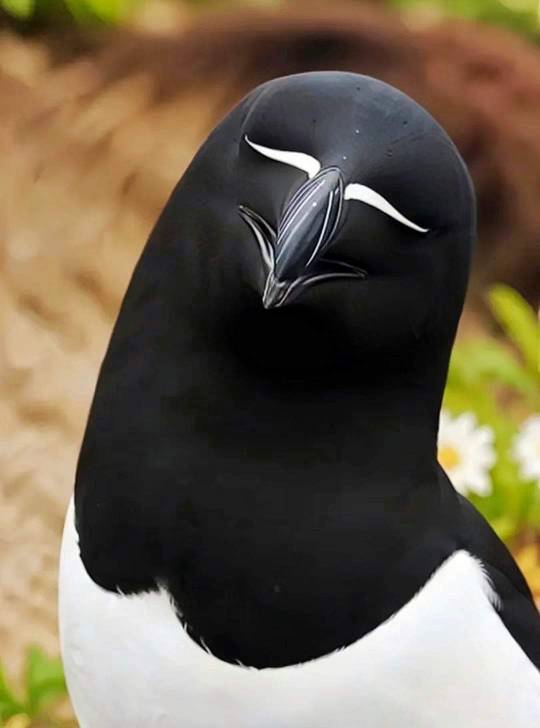

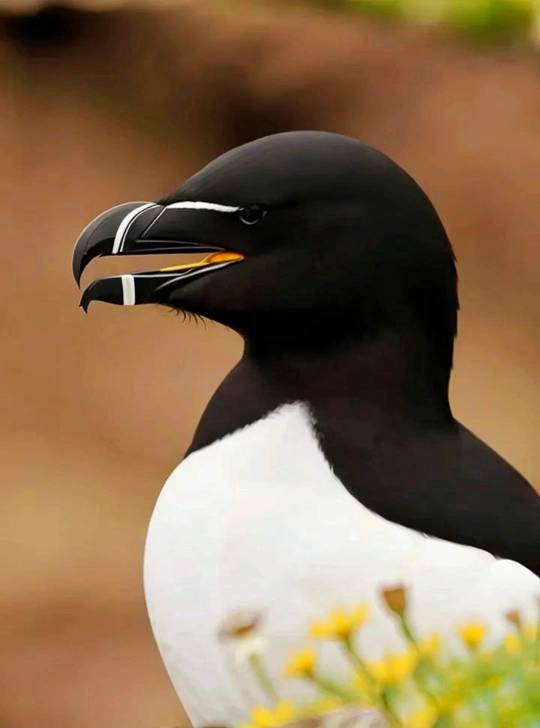
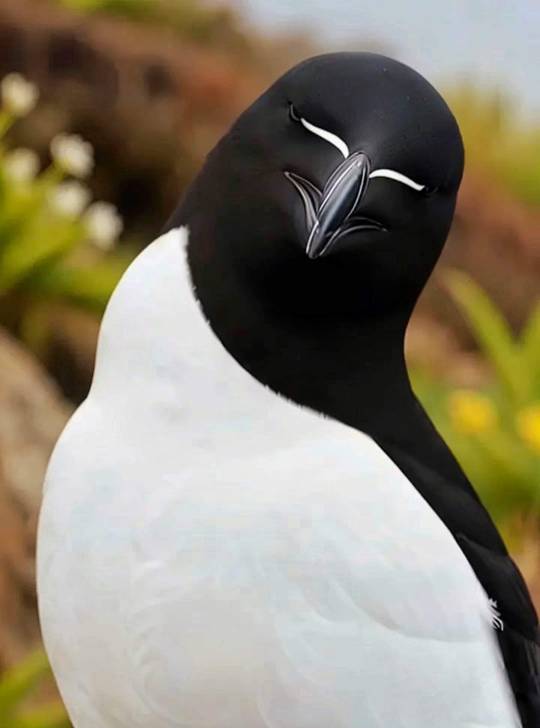
الطبيعة و الحياة
The razorbill, razor-billed auk, or lesser auk (Alca torda) is a North Atlantic colonial seabird and the only extant member of the genus Alca of the family Alcidae, the auks. It is the closest living relative of the extinct great auk (Pinguinus impennis).
11K notes
·
View notes
Text
Aren't great auks the original penguins? If I recall correctly welsh sailors when they arrived on the southern hemisphere looked at the birds and said: ye I know this one, that's a penguin, thinking of the great auk. And then we lost the original 😢

Sometimes, people underestimate my love for this one, specific extinct bird. I, of course, remind them.
The cutest non-penguin not around!
1K notes
·
View notes
Text
Why no one talks about the great auk (Pinguinus impennis)? I JUST FOUND OUT THEY EXISTED TODAY and like THIS SPECIES IS LITERALLY WHY WE CALL NAMED PENGUINS PENGUINS.

they were amazing!!!!
im kinda obsessed...


512 notes
·
View notes
Text





























Art Fight 2024 Collection! I aimed to hit a full month's worth of pieces throughout the event. While I didn't make the goal of 31, I did 29 pieces! (Hope that's correct anyway. I have trouble counting lol) All the characters above are other artist's characters. Below the break are @/Links to the artist's blog/pages. They're ordered in the character's appearance from the top to bottom and from left to right.
epic.juice (Instagram Link) VORBITAL (Twitter Link) @tonytamales Curlicious (Twitter Link) @fizzlecosmos @killerk0re Edgar (Twitter Link) @tartintart @vadapega @lunasmoonpalace @wafaaaahhh (For both characters in the row and the very last image) Crazilily (Sheezy Art Link) @cherubim-grimm Gaem0n (Twitter Link) Char (Twitter Link) McKraken (Twitter Link) @sadlyjustal @night-maerish KaporiKnight (Twitter Link) MrKermodeBear (Twitter Link) Tyford (Twitter Link) Binch97 (Twitter Link) @pinguinus Foblicous (Twitter Link) @pearlineproductions @cinna64 @yolkerson
108 notes
·
View notes
Text
Animal of the Day!
Great Auk (Pinguinus impennis)
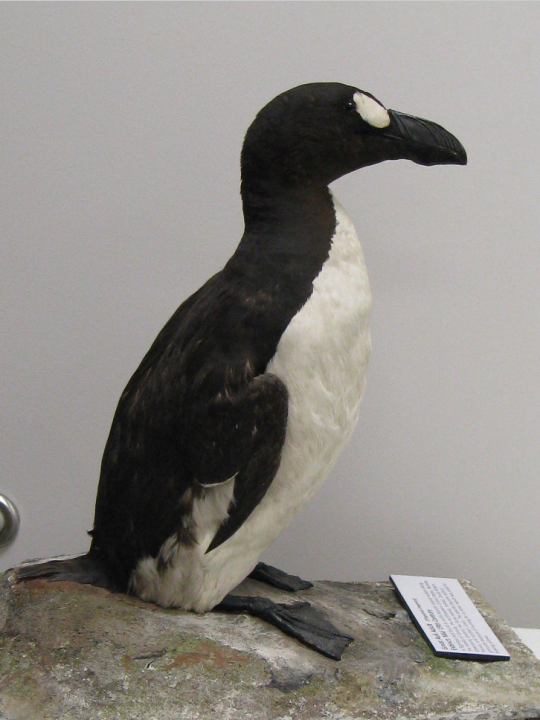
(Photo from the Cincinnati Museum Center)
Extinction Date- 1844
Habitat- Northern Atlantic Ocean
Size (Weight/Length)- 75 cm
Diet- Fish; Crustaceans
Cool Facts- The great auk, while looking like a penguin, is nowhere close to being related to them. These seafaring birds were the only auk species to survive to the modern era, numbering in the millions during the Pleistocene. They were extremely powerful swimmers and the abundance of fish in the Northern Atlantic provided greatly. The great auk was held in high importance to Neolithic peoples due to their depiction in cave art and jewelry made of their bones. Unfortunately, great auks were easy to hunt and resulted in their extinction. Their feathers were used in pillows and their eggs were seen as a delicacy. The last pair of great auks were strangled to death and their egg was smashed in 1844. Today, the great auk’s closest relative is the razorbill. Luckily, the razorbill is of least concern with an increasing population due to protections placed on their fishing grounds.
Rating- 12/10 (In the genus Pinguinus, which penguins were later named after.)
#animal of the day#animals#auk#monday#monday 16#great auk#birds#sea birds#biology#science#conservation#the more you know#extinct#taxidermy#pleistocene#extinctober
297 notes
·
View notes
Note

Unfortunately my tablet died so it’s just horrible sketches but I freakin’ LOVE auks so. Please enjoy(?) me trying to figure out Great Auk vs Harpy proportions.

Are there… penguin harpies in the world of Kosa? Because you mentioned that crawlies exist in the ocean, so i kind of envisioned like. An emperor penguin king.
i've actually thought about it a lot and the answer is i'm not too sure... see the harpies could only be made from birds that the people in Unspecified Ancient Times In What Is Essentially Eurasia had easy access to (bearing in mind that harpies today do not map perfectly onto their original constituent species from a thousand years ago). i could imagine maybe an African penguin, but an emperor penguin might have been juuuust a bit out of reach. But it's also likely that some of auks later migrated to remote polar regions and then eventually specialised/evolved/whatever into something very emperor penguin like. but hardline spec bio/evo is not what this story is about so hey who knows
#fun fact the great auk was the only modern species in the genus Pinguinus#which due to their visual similarly inspired the name penguins#idk maybe the wizards of it all made them go extinct faster but they’d probably be around for the period of time necessary to get harpy-Ed#I feel bad because I should have drawn them properly swimming where they look cool and not like Huge Dorks#and for most of these when I wasn’t heavily referencing kosa harpies I was referencing historical art of great auks#who just never seem to have been drawn swimming underwater! sad.#to be clear I didn’t send this ask#I just fucking love auks#sketchin’#Mayhaps there shall be cleaner art later. Mayhaps.
71 notes
·
View notes
Text
Today is #AudubonDay, commemorating pioneering naturalist and artist John James Audubon who was born #OTD (26 April 1785 - 27 January 1851). I put together this overview of the 5 now extinct and 3 other possibly extinct birds whose images are recorded in The Birds of America for the blog:


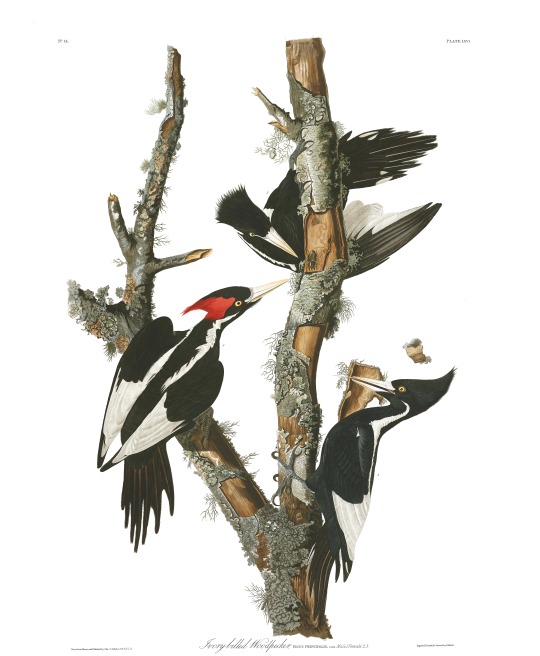


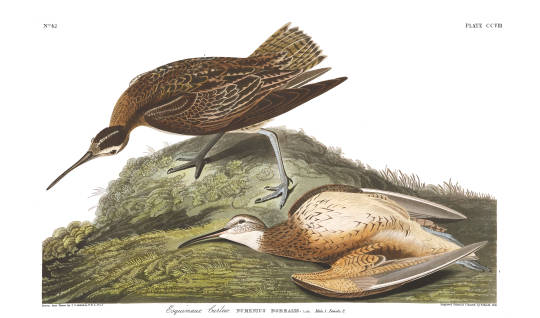


Plate 26: Carolina Parrot, 1827 (Carolina Parakeet, Conuropsis carolinensis) Plate 62: Passenger Pigeon, 1829 (Passenger Pigeon, Ectopistes migratorius) Plate 66: Ivory-billed Woodpecker, 1829 (Ivory-billed Woodpecker, Campephilus principalis) Plate: 185: Bachman’s Warbler, 1834 Bachman’s Warbler, Vermivora bachmanii) Plate 186: Pinnated Grous, 1834 (Heath Hen, Tympanuchus cupido cupido) Plate 208: Esquimaux Curlew, 1834 (Eskimo Curlew, Numenius borealis) Plate 332: Pied Duck, 1836 (Labrador Duck, Camptorhynchus labradorius) Plate 341: Great Auk, 1836 (Great Auk, Pinguinus impennis)
All plate images courtesy of the John James Audubon Center at Mill Grove, Montgomery County Audubon Collection, and Zebra Publishing. The entire digitized collection is available for viewing and downloading here.
#Audubon Day#Audubon#John James Audubon#bird#birds#birding#ornithology#ornihological illustration#scientific illustration#natural history art#sciart#19th century art#American art#lithograph#extinction#extinct birds#conservation biology#blog post#OTD#birthday post#animals in art
360 notes
·
View notes
Text
"Penguins don't exist! The species we call penguins were just named after penguins!"
So... you're saying that penguins do indeed exist, because we named an entire species that.
You do know that we literally just made up all the species' names, right? None of them are like, biologically derived names. If we call a thing a certain name, then it is that name. Even if we've used that same name for something else before.
And no one is calling them Pinguinus Impennis.
But they are still literally, and not figuratively, penguins, because we named them that.
True statement: The penguins we know today were named after an unrelated, now extinct species, that looked similar.
Untrue Statement: Penguins don't exist
#penguins#greak auks#penguins are real#i am being needlessly pedantic about this joke#but the joke itself is needlessly pedantic so i feel like that's fair
12 notes
·
View notes
Text

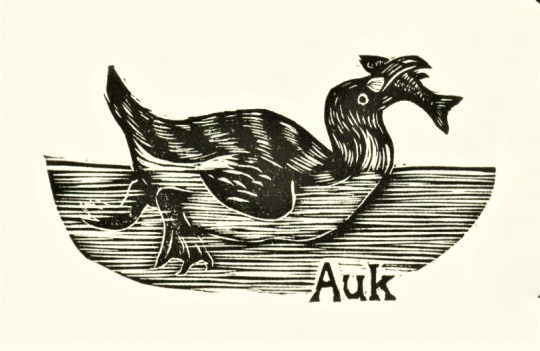
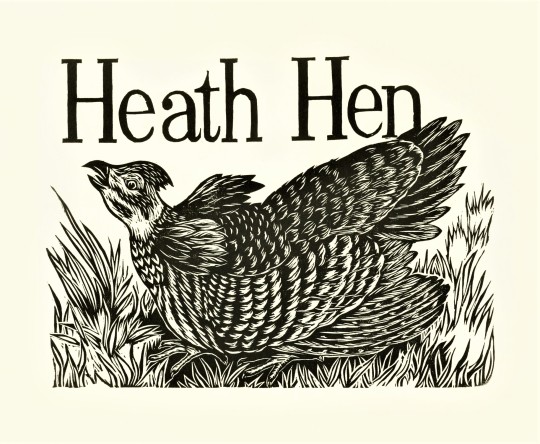

A Gone World Feathursday
Yesterday, we featured some woodcuts by the New Jersey-based artist Michael Dal Cerro (b. 1953) from his recently-donated 1992 artists book Small World Alphabet published in Seattle by Grey Spider Press in a limited edition of 75 copies. The book is an abecedarium highlighting the outsized impact our species has had on our planet's environment. Today we show all the woodcut birds presented in his book, and of course the unifying factor between these specific species is that they have all gone extinct through human intervention:
Dodo (Raphus cucullatus): a large flightless bird that was endemic to the island of Mauritius, part of a clade of extinct flightless birds that were members of the family which includes pigeons and doves. This docile bird that had never known predators was hunted to extinction by the late 17th century.
Great Auk (Pinguinus impennis): a large sea-going flightless bird of the family Alcidae that became extinct by the mid-19th century due to overhunting, particularly for its valuable down feathers used in pillows.
Heath Hen (Tympanuchus cupido cupido): an extinct subspecies of the Greater Prairie Chicken (Tympanuchus cupido), a large North American bird in the grouse family. Once extremely common, it became extinct in 1932, due to centuries of overhunting, predation by feral cats, and poaching.
Passenger Pigeon (Ectopistes migratorius): a migratory species of North American pigeon, once the most abundant bird on the continent, that was hunted to extinction by 1914.
View other posts on extinct birds.
View more Feathursday posts.
#Feathursday#extinct birds#Michael Dal Cerro#Small World Alphabet#Grey Spider Press#woodcuts#Dodo#Great Auk#Heath Hen#Passenger Pigeon#woodcut artists#abecedarium#abecederia#fine press books#fine press printing#birds#birbs!
147 notes
·
View notes